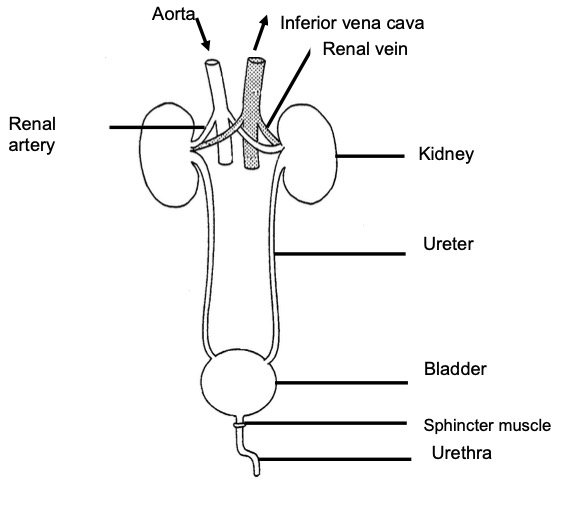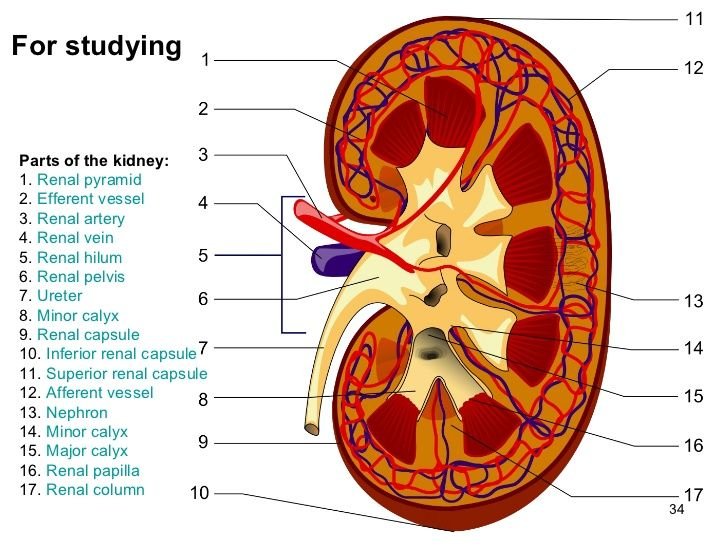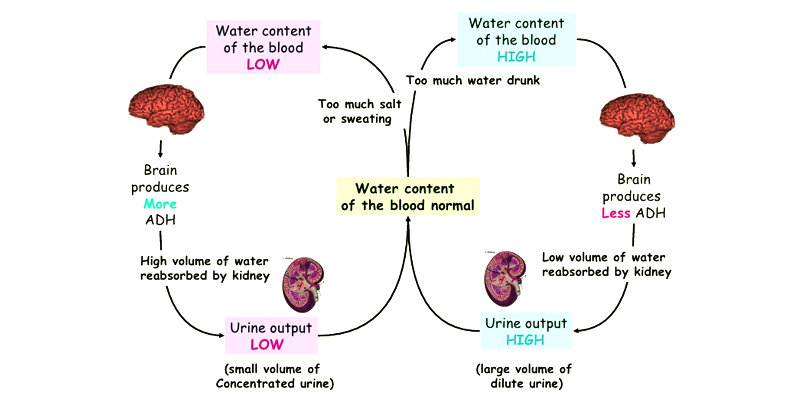JOIN OUR WHATSAPP GROUP. CLICK HERE
Excretion and Osmoregulation Grade 11 (Class 11) notes pdf
Excretion and Osmoregulation Grade 11 (Class 11) notes pdf Excretion and osmoregulation Grade 11 (Class 11) Notes in Biology or Life Science. These topics will be covered on this page:
Excretion is the process through which an organism gets rid of metabolic waste. This is mostly done by the skin, kidneys, and lungs in vertebrates. In contrast, when a material is secreted, it may carry out specified functions after leaving the cell. All types of life require the process of excretion.
and…
Osmoregulation is the active control of the osmotic pressure of a living thing’s body fluids as measured by osmoreceptors in order to preserve the water content of the creature’s homeostasis.
Excretion
Understanding Terminologies & definitions on Excretion Topic
There are a number of terminologies that every learner should know how to define under the topic of Excretion. Knowing the below terminologies will significantly help you in your exams, test, and assignments.
- What is Active absorption: absorption of substances against the concentration gradient using energy
- What is Ascending limb: a part of the loop of Henlé of the renal tubule of the nephron which carries wastes from the hairpin bend towards the distal convoluted tubule Bowman’s capsule: cup-shaped structure surrounding the glomerulus of the nephron in the human kidney
- What is Calyx: wide funnel-like structure found in the kidney into which the collecting tubules open
- What is Descending limb: a part of the loop of Henlé of the renal tubule of the nephron which carries wastes from the proximal convoluted tubule towards the hairpin bend Dialysis: a method of artificially removing waste products from the bloodstream if the kidneys are unable to do so on their own
- What is Distal convoluted tubule: the twisted portion of the renal tubule that is furthest away from the Malpighian body
- What is Duct of Bellini: tubes formed by the union (joining) of the collecting ducts in the kidney
- What is Excretion: removal of waste products of metabolism from cells
- What is Filtration: the process by which water and small solutes, including metabolic wastes, are extracted from the body fluid and passed into the excretory system Glomerulus: capillary network within Bowman’s capsule of the nephron of the human kidney; also referred to as the first capillary network
- What is Loop of Henlé: region of the nephron of the human kidney which lies between the proximal and distal convoluted tubules
- What is Malpighian body: part of the nephron of the human kidney; made up of the Bowman’s capsule and the glomerulus
- What is Nephron: the functional unit responsible for excretion and osmoregulation in the kidney
- What is Passive absorption: absorption of substances down a concentration gradient i.e. from high concentration to low concentration
- What is Podocytes: specialised squamous cells in the inner layer of the Bowman’s capsule in the nephron; assist in the filtration process
- What is Proximal convoluted: the twisted portion of the renal tubule that is closest to the Malpighian body
- What is Renal artery: blood vessel carrying oxygenated blood with nitrogenous wastes to the kidney
- What is Renal capsule: the thin, fibrous, protective outer covering of the kidney
- What is Renal vein: blood vessel carrying de-oxygenated blood with very little nitrogenous wastes away from the kidney
- What is Selective absorption: the absorption of only certain solutes from blood filtrate; takes place in the excretory organs of animals
- What is Slit pores: tiny pores between the podocytes which form the lining of the Bowman’s capsule; the pores enable the podocytes to act as selective filters
- What is Tubular secretion: movement of waste substances, from the second capillary network, into the renal tubule of the nephron in the human body
- What is Ureter: the duct which conveys urine from the kidney to the bladder Urethra: tube transporting urine from the bladder to the exterior
Understanding the Urinary System

Longitudinal section of a human kidney

OR
Detailed longitudinal section of a human kidney

Osmoregulation
What is Osmoregulation? Osmoregulation is the process of maintaining salt and water balance (osmotic balance) across membranes within the body. The fluids inside and surrounding cells are composed of water, electrolytes, and nonelectrolytes. An electrolyte is a compound that dissociates into ions when dissolved in water. A nonelectrolyte, in contrast, does not dissociate into ions in water. The body’s fluids include blood plasma, fluid that exists within cells, and the interstitial fluid that exists in the spaces between cells and tissues of the body. The membranes of the body (both the membranes around cells and the “membranes” made of cells lining body cavities) are semipermeable membranes. Semipermeable membranes are permeable to certain types of solutes and to water, but typically cell membranes are impermeable to solutes. Source: Open Textbook

Video Lesson on Osmoregulation
Downloadable Notes on Excretion and Osmoregulation for Grade 11
Term 3 Excretion Tasks for Grade 11 Learners
How to Pass Life sciences Grade 11 with distinctions
One of the most significant accomplishments in your academic career is passing matric. It provides access to a wide range of post secondary options and employment possibilities. Use our best study advice to complete your matriculation, and you’ll succeed with flying colors.
READ => How to get your matric results step by step
- Attend class
- Ask questions
- Make notes
- Study
- Practise
- Study groups
- Extra class
- Motivation
- Complete assessments
- Prepare for the Exams in due time
Download Past Exam Papers & Memo per Province
- Department of Basic Education Grade 9 Exams
- Eastern Cape Papers and Memorandum
- Free State Papers and Memorandum
- Gauteng Papers and Memorandum
- KwaZulu-Natal Papers and Memorandum
- Limpopo Papers and Memorandum
- Mpumalanga Papers and Memorandum
- Northern Cape Papers and Memorandum
- North West Papers and Memorandum
- Western Cape Papers and Memorandum
JOIN OUR TELEGRAM CHANNEL. CLICK HERE

Be the first to comment